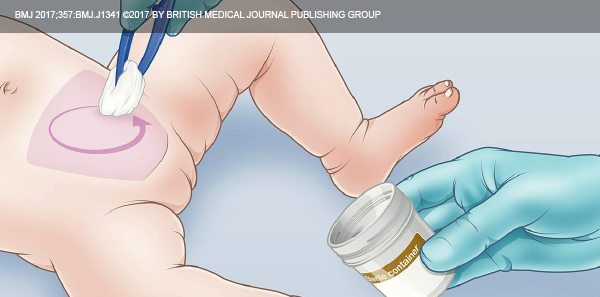
The Case
The emergency department is getting busier with the after-work and after-school crowds. The next patient is a 5-month-old boy brought in by his parents because of a fever. The fever started that morning, and they kept him home from day care. The infant is immunized, looks well, and is drinking fluids in the department. Your examination does not indicate a source of infection. A urinary tract infection (UTI) is a possibility, but you know it could take a long time to get a noninvasive urine sample. In addition, bagged samples can often be falsely positive, and then you would need to get a urine sample using an invasive method such as a catheter. Could there be a way to increase the chance of getting a clean catch urine in fewer than five minutes?
Explore This Issue
ACEP Now: Vol 36 – No 12 – December 2017Background
Urine samples are frequently required to rule in or rule out UTIs in children presenting to the emergency department with vomiting, fever, abdominal pain, and/or nonspecific illnesses.
The American Academy of Pediatrics (AAP) states that the diagnosis of a UTI requires a urinalysis and a urine culture. This comes from its 2016 clinical practice guidelines for the diagnosis and management of UTIs that reaffirmed earlier recommendations.1
There are many reasons to rule in or rule out UTIs in children. These include the fact that missed UTIs can result in renal scarring and other pathology, appropriate antibiotic stewardship, and the avoidance of expensive and unnecessary imaging studies.
The AAP strongly recommends an invasive urine sample if the child looks unwell and requires antimicrobial therapy. The urine sample can be obtained with a suprapubic aspiration or urethral catheterization. Obtaining an invasive sample is a clinical decision.
The AAP also makes a strong recommendation that if the clinician determines that the febrile infant has a low likelihood of a UTI, then no urine testing is necessary as long as there is close clinical follow-up.
If the infant does not have a low likelihood of having a UTI but looks well, the AAP recommends two options: obtain the urine sample using one of the invasive method mentioned previously, or use a two-step approach to identify a UTI. The first step is to obtain a urine sample using a noninvasive method such as a bagged urine specimen. If the sample shows no evidence of a UTI, then cultures may be omitted. If the bagged sample shows evidence of a UTI, then the second step is to use an invasive method and perform a urine culture.
Clinical Question
In infants suspected of having a UTI, does the Quick-Wee method increase the success rate of getting a clean catch urine?
Pages: 1 2 3 | Single Page






No Responses to “Quick-Wee an Easier Way to Get Infant’s Clean Catch Urine Sample”